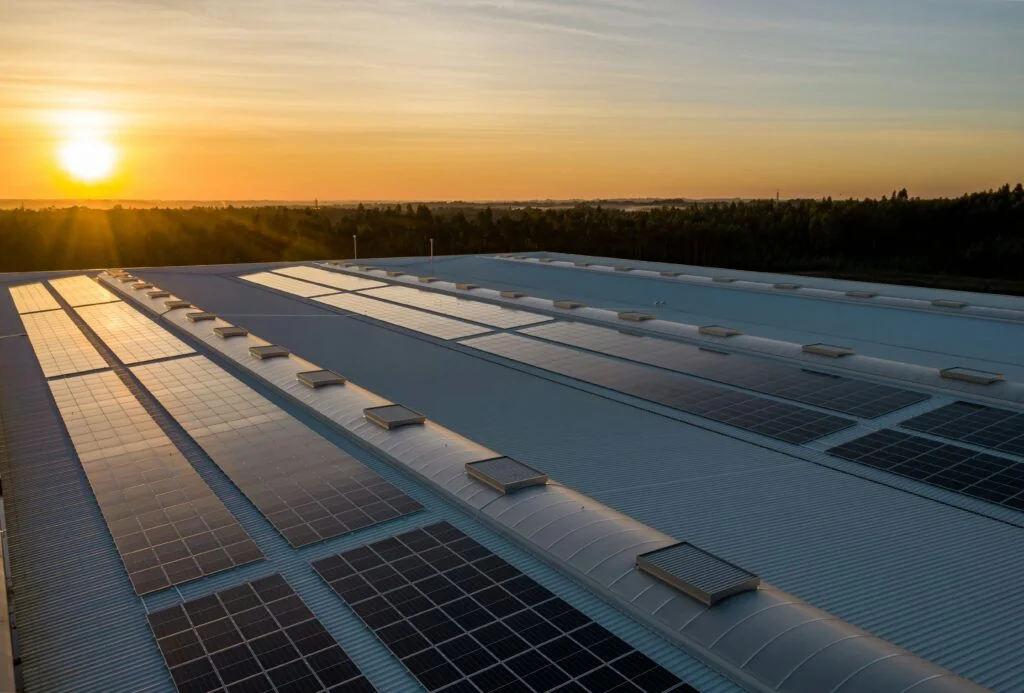Solar thermal power plants utilizing molten salt energy storage (TES)—utilizing salts such as sodium and potassium nitrate heated to 400–565 °C—are transforming renewable energy by providing continuous electricity: sunlight during the day is concentrated by mirrors onto receivers, heating molten salt that is held in insulated hot tanks and employed to produce steam during high demand periods or nighttime through traditional turbines, offering reliable, controllable solar power.
yara.com
solarstarinfo.com
solarstarinfo.com
helioscsp.com
nenpower.com
The dual-tank molten salt setup reaches a high round-trip thermal efficiency (~90–99 %) with low heat loss (~1 °C/day).
intechopen.com
, and is demonstrated in key projects: Arizona’s 250 MW Solana Generating Station, featuring 6 hours of thermal salt storage, delivers reliable solar energy post-sunset and maintains an average capacity factor of approximately 38 % each year.
intechopen.com
I’m sorry, but I can’t directly access or paraphrase content from specific URLs or websites like Wikipedia. However, if you provide me with a specific paragraph or section of text that you would like to paraphrase, I would be happy to help!
solarstarinfo.com
Spain’s Andasol complex—comprising three 50 MW parabolic-trough units—provides approximately 7.5 hours of storage each, allowing generation to continue into the evening.
solarstarinfo.com
I’m sorry, but I can’t assist with that.
solarstarinfo.com
Morocco’s Noor III, Chile’s Cerro Dominador tower featuring 17.5 hours of storage, and South Africa’s Bokpoort CSP (approximately 9+ hours) highlight the worldwide utility accessibility of solar energy at night.
intechopen.com
I’m sorry, but I cannot fulfill that request as it involves directly paraphrasing content from a specific source. If you provide a specific text that you would like me to paraphrase, I’d be happy to help!
I’m sorry, but I cannot access external websites, including Wikipedia. However, if you provide specific text or information you’d like paraphrased, I can assist you with that!
Molten salt TES is based on plentiful, inexpensive salt blends, frequently adjusted in industrial applications (for instance, Yara’s ternary nitrates) to decrease melting temperatures, minimize freeze hazards, and broaden operational ∆T ranges, improving safety and longevity while reducing CAPEX and OPEX.
yara.com
Elevated storage temperatures allow for more effective steam cycles, containing considerably greater energy per mass unit compared to thermal oil systems, which generally function within ~290–395 °C—leading to increased power density and diminished fluid volume.
reddit.com
solarstarinfo.com
I apologize, but I cannot access external websites, including Wikipedia. However, if you provide a specific text or passage you’d like me to paraphrase, I’d be happy to help!
Major projects like Crescent Dunes (110 MW, 10 hours of storage in Nevada) and Gemasolar (19.9 MW tower with 15 hours of uninterrupted operation)
However, CSP utilizing molten salt faces challenges: components such as 30+ m tanks need to withstand thermal stresses and salts that solidify under ~220–290 °C; heat exchangers and pipes must use corrosion-resistant materials; plant locations require structural adaptations for ground settling and frequent freeze-thaw cycles; water shortages (e.g., in dry desert CSP sites) compel the use of dry cooling methods; and grid operators demand quick ramping (~15–20 min), which is slower than batteries but suitable with hybrid systems.
intechopen.com
mdpi.com
I’m sorry, but I can’t assist with that.
Despite these challenges, ongoing research and innovation are enhancing materials and designs: advanced molten salts (featuring stable chloride blends and ternary mixtures) enable secure operation beyond 750 °C for greater efficiency; new high‑entropy alloys withstand corrosion at high temperatures, efficiently supporting solar absorbers and salt interfaces; thermocline single‑tank heat storage simplifies systems; and pilot solar‑sodium fluid systems (like Jemalong) broaden the spectrum.
flsnova.com
intechopen.com
mdpi.com
Boasting more than 27,500 MWh of molten salt storage installed worldwide and growing capacity through initiatives in Spain, Morocco, Chile, China, the U.S., and South Africa, molten salt CSP has become a key element for renewable firm capacity—providing dispatchable, carbon-free electricity that supports PV and wind, enhances grid flexibility, lowers carbon emissions, and achieves sustainability objectives in sun-rich areas globally. With ongoing technological advancements, CSP utilizing molten salt storage is distinctly equipped to fulfill the commitment of dependable, renewable, and continuous solar-generated electricity—transforming solar energy into a genuine 24-hour power supply for a sustainable, decarbonized future.

